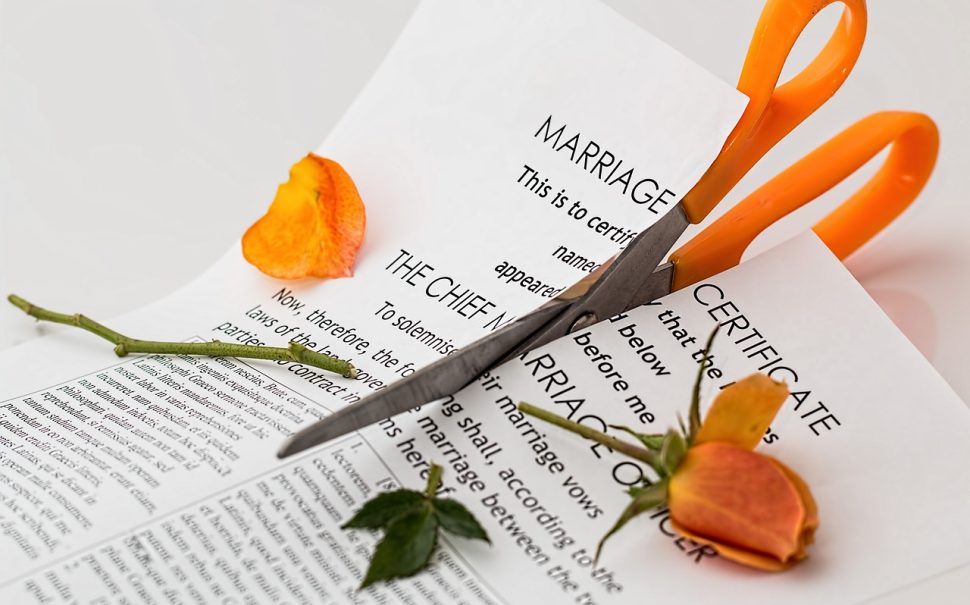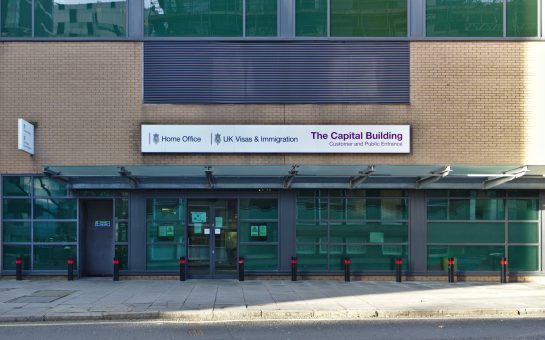The rate of divorce in the UK has hit its lowest level in 51 years, according to data published by the Office for National Statistics.
The most recent data shows that in 2022, there were 78,759 divorces granted to opposite-sex couples in England and Wales. This is the lowest rate since 1971, when the figure was 74,437.
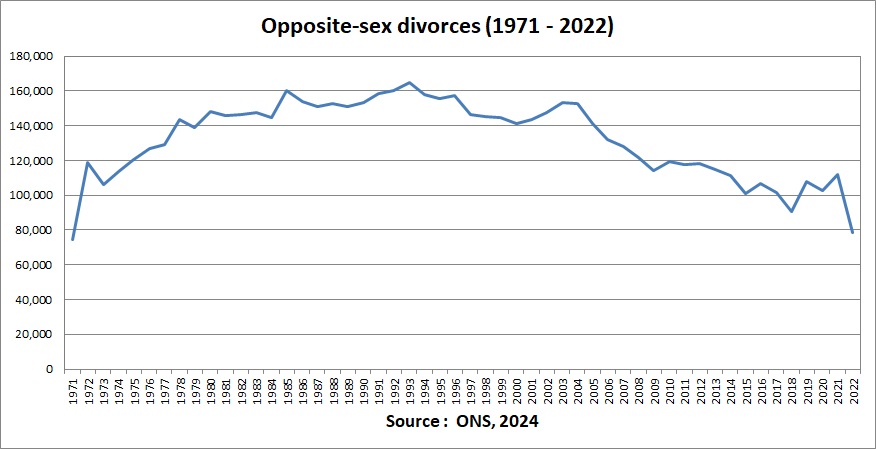
Mark Widdowson, a relationship counsellor based in Manchester city centre, is not surprised by the trend. He said: “This reflects a change in social attitude to marriage. I have seen an increasing trend in cohabitation, where people tend to live together rather than get married. Less people are getting married these days, so naturally less people are getting divorced.”
Despite the downward trend, the data shows an increase of 9.6% in the number of divorces between 2020 and 2021 – before numbers fell the following year.
Charlotte Beck, a partner in the family law department at Slater Heelis in Manchester, suggests the 2021 anomaly may be a knock-on effect of the pandemic.
She said: “This statistic may reflect the flood of divorces in 2021 as a result of Covid delays in 2020. Lockdown was a testing time for marriages, and couples seeking divorce as a result were required to wait.”
By far the most common reason for divorce up to 2022 was ‘unreasonable behaviour’, with this representing 48.5% of opposite-sex divorces between 2012 and 2022.
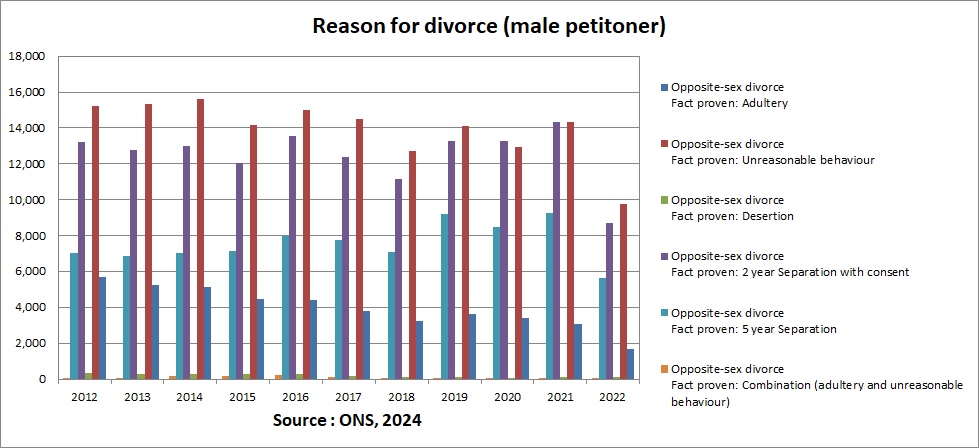
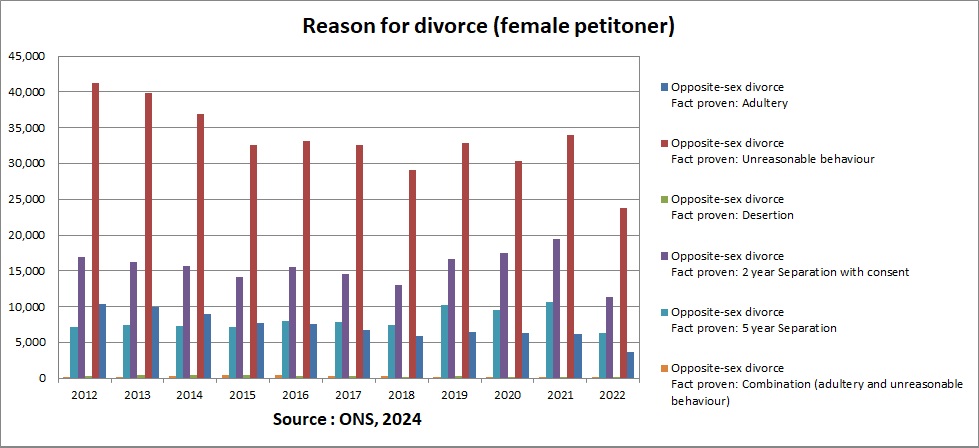
The introduction of the Divorce, Dissolution and Separation Act 2020, which came into force in 2022, has brought into law the concept of ‘no-fault divorce’, meaning that couples petitioning for divorce are no longer required to give reason.
Beck believes the new act is a positive change. She said: “The process of separating can be very hostile. This new legislation effectively takes away the hostility, because couples no longer have to allocate blame.”
She is hopeful that the act will create a focus on “grown-ups being able to have grown-up discussions about decisions in their lives, making it easier for everybody to move forward.”
Although the data indicates a downward trend in opposite-sex divorce, same-sex divorce numbers have risen following the introduction of same-sex marriage in 2014.
Although same-sex divorce represented only 1.6% of the total number of divorces granted in 2022, the data shows a huge 302% increase in the rate of same sex-divorce between 2016 and 2017, with a steady increase continuing until 2021 :
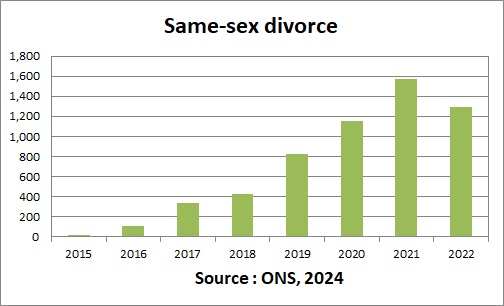
Commenting on the statistics, Widdowson said: “A rise in same-sex divorce is not surprising. When equal marriage was introduced 10 years ago, there was a huge clamour of same-sex couples who wanted to get married quickly, now that they were able to. These figures indicate that same-sex couples are merely catching up in terms of the divorce rate.”
Although the divorce rate in general may be decreasing in opposite-sex couples, the statistics reveal a new phenomenon known as ‘grey divorce’.
Data shows that the divorce rate in those aged 60 and over has increased significantly over the last 50 years, indicating that couples are increasingly choosing to divorce in later life.
Although the ONS has not published data on divorce by age since 2018, statistics up to that year show a steady increase of divorce in the over-60’s over the previous five decades, with an increase of over 300% in 2018 compared to 1968. The latest article published by the ONS reflects this increase.
Beck suggests the reasons behind this trend are financial as well as social. She said: “Often in the older age demographic, enough wealth has been acquired so that couples don’t have the financial constraints on them to stay together.”
She added: “Social and cultural attitudes have also evolved, making it easier for older people with more traditional views to feel comfortable separating.”
Sheila Frost, 65, exemplifies the trend, having finalised her divorce in 2023, after 42 years of marriage.
The retired teacher from Altrincham said: “I no longer wanted to stay in a marriage in which I was unhappy, and one day about three years ago I woke up and realised I didn’t have to.”
She added: “Social attitudes around divorce have changed dramatically since I got married in my twenties, when there was still a real stigma. I may be described as a grey divorcee, but I feel younger than ever since my divorce. I have a whole exciting new lease on life.”
Frost also predicts that the trend will continue, as she has seen it gain popularity amongst her own peer group. She said: “I notice a lot of my friends, both male and female, in their early to mid sixties, are choosing to divorce their spouses, often after decades of marriage. I think we have reached a point in society where we now understand that life is just too short to spend it unhappy. It’s wonderful that we know we have other options.”
Image credit: Pixabay
